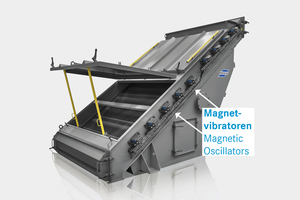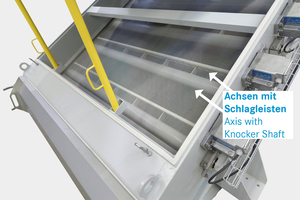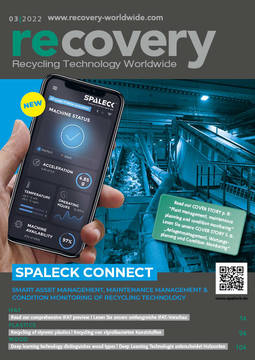Recovery of Product from Dedusting Systems
Industrial process plant handling bulk material use usually a dedusting system. Dust is created during process steps, e.g. crushing, or is existing in the raw or to be recycled product. There is a need for dedusting systems to reduce dust settling in the surroundings of machinery, to support different process steps (e.g. drying) and to reduce the amount of fine particles in a generated product. However, especially when companies are dealing with fine powders, it is not uncommon for the dust collector filters to catch material that would still be a saleable product, but is unused due to the amount of dust it is mixed with. RHEWUM proposes to screen the filter dust to recover valuable material, which can be used to generate revenue and avoid disposal costs.
Based on RHEWUM's experience, the amount of reusable product lost in dedusting systems can vary from 20% to 80% of the material that ends up in the filters, depending on the setup of the system and the particle size of the needed product. The RHEWUM screening machine type RHEsono (Fig. 1) allows to efficiently screen large amount of material down to separation cuts of 50 µm, which makes recycling of fine filter dust feasible without the need for an air classifying system. The basis of the RHEsono screening machine is an inclined vibrating mesh that is fixed within a static housing. The inclination of the mesh is the key to generate a material transport without the need for a conveying vibration system. Material flows over the mesh simply due to gravity. The transport is really fast, which leads to thin material layers even at high capacities. The static housing means that connections of inlets and outlets of the machine can be hard flanged and therefore the whole machine is easily made dustproof. Additionally, the machine generates nearly no dynamic loads.
The vibration of the mesh is used to break up agglomerates and mix the material on the screen. Axis are positioned below the mesh and are brought in contact to the mesh via a so called knocker shaft (Fig. 2). The axis are put into vibration using magnetic oscillators and the vibration is transferred directly to the mesh via the knocker shaft. This direct excitation of the mesh allows a vibration at a higher frequency and with larger acceleration values compared to machines where a whole machine housing is put into vibration. Usually a vibration frequency of 50 Hz with acceleration values between 10 and 20 g is used. These large acceleration values are the reason that allows the fine screen cuts of the RHEsono screening machine. Fine particles have larger adhesive forces compared to their inert mass, which means that larger accelerations are needed to overcome these adhesive forces and separate individual particles.
Another advantage of the magnetic oscillators is that their intensity can be externally adjusted to react fast to material or load changes on the machine, increasing or decreasing the vibration of the mesh. The controls also offer an automatic cleaning cycle that increases the vibration to a maximum at regular intervals. This helps to free the mesh from clogged particles, which is especially necessary during fine screening separations.
These unique design advantages are well proven for fine separations. As an example, depending on the material properties this concept allows to screen around 3 t/h per m2 of screening area of material at 100 µm. As the RHEsono machine design is easily scalable this leads to up to 70 t/h of material that can be screened on one machine.
RHEWUM recommends to take a look at the material that is ending up in the respective dedusting system. There might be the opportunity to increase the efficiency and ROI of your recycling plant.



